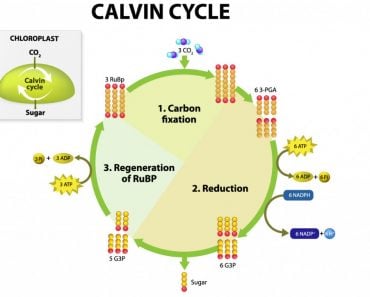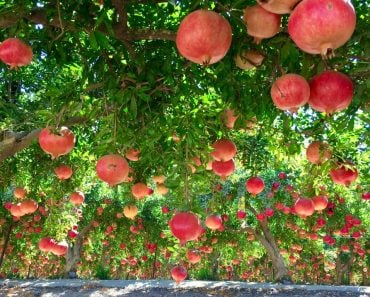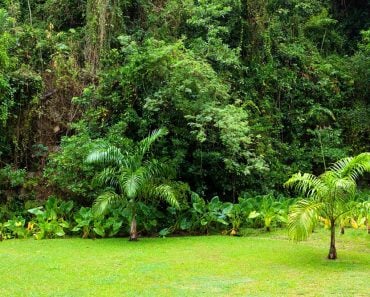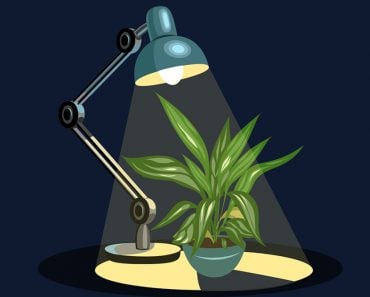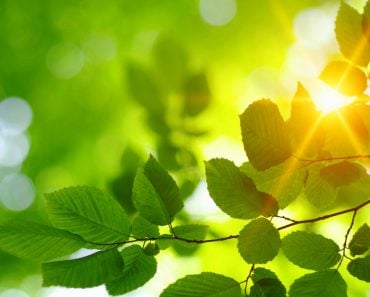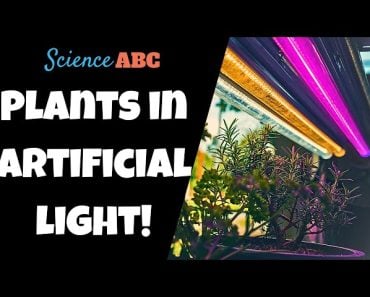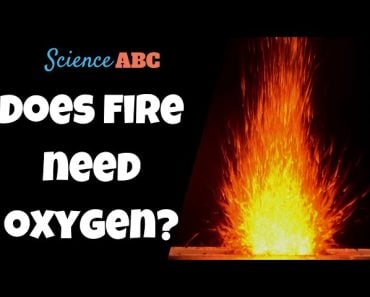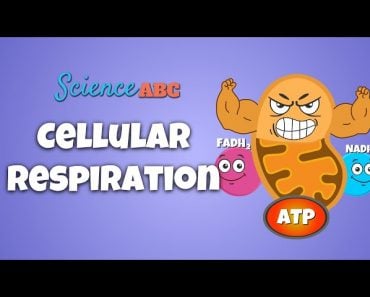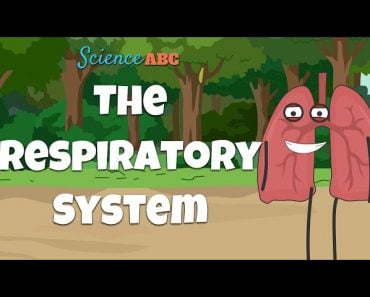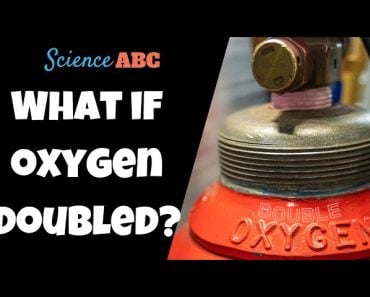Table of Contents (click to expand)
Photosynthesis is the process used by plants to convert sunlight into chemical energy that can be used to fuel the plants’ growth. The process is fueled by the sun and powered by the chloroplasts in the plants’ leaves. The process begins with the sun’s light energy breaking down water molecules into oxygen and hydrogen. The oxygen is released into the air and the hydrogen is used to power the conversion of carbon dioxide into glucose, which is the plant’s food.
Plants, like every other organism, need energy to live, grow and repair. Unlike heterotrophs – animals that consume food to synthesize energy – plants or autotrophs are self-reliant — they can make their own food, and therefore energy, by using the resources available in their surroundings. The resources include sunlight, water and carbon dioxide, and this incredible process is called photosynthesis.
The process is known as photosynthesis because, while water and carbon dioxide are the major ingredients required to cook the food, it is light that ignites the stove, and sunlight is the most abundant light that illuminates the planet.
A photosynthetic organism using the energy of photons (photo-), makes its own food (-synthesis).
Recommended Video for you:
The Photosystem
A plant is essentially a highly efficient solar panel. It is replete with molecular structures that have evolved to soak up and absorb as much sunlight as possible.
These structures are in separate compartments of the cell called chloroplasts. Inside the chloroplasts are small towers of discs called grana, each disc is called thylakoid. In the membrane or lining of the thylakoids are a dense grid of various light absorbing molecules, the most notable of them, chlorophyll. The pigments, like any other pigments, absorb light of certain wavelengths and reflect the rest.
This is how pigments or colors are radiated. Majority of plants are green because they (the abundance of chlorophyll) reflect wavelengths that we associate with green while absorbing wavelengths that fall into the red and blue zones. But there are other pigments that absorb different wavelengths in the visible spectrum. Carotenoids are pigments that absorb in the blue to green wavelengths, reflecting orange, yellow and red wavelengths.
This is why leaves take on shades from orange to red during autumn, as they start losing their chlorophyll come at that time of the year. Some deep-sea algae (rhodophyta) are red in color due to a photosynthetic pigment called phycoerythrin and phycocyanin which absorb in blue to green region and reflect back red wavelengths.
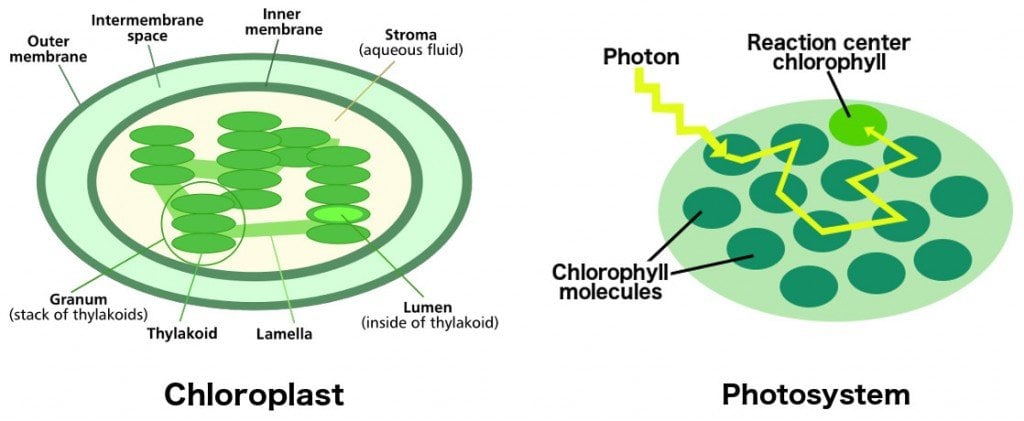
These pigments are part of larger protein machines called photosystems. Plants have two photosystems – photosystem I (PSI) and photosystem II (PSII), each having a key chlorophyll-a molecule embedded in it, along with other accessory pigments. These accessory pigments collect light energy and pass it onto the main chlorophyll-a molecule. The photosystems are the main light harvesting machines in the chloroplasts that convert light energy to chemical energy that the cell can use to do build its food. Some algae and photosynthetic bacteria only have single photosystems.
Solar energy is used by the chloroplast to trigger a chemical reaction between the two reactants – water and carbon dioxide.
The Process
A plant obtains water from its roots through osmosis. From there, the water ascends through the stem and is transported to every part of the plant that requires it for a myriad of processes other than photosynthesis.
To ensure that plant doesn’t dry out due to evaporation, they evolved special pores, called stomata about 400 million years ago. Stomata allowed them to respire, exchanging gases like oxygen and carbon dioxide. However, the crucial development of pores came at the expense of losing water unnecessarily
The stomata inhale carbon dioxide exhaled by animals, which reacts with water in the presence of sunlight to create sugar (glucose), their food. However, the reaction unfolds in two parts.
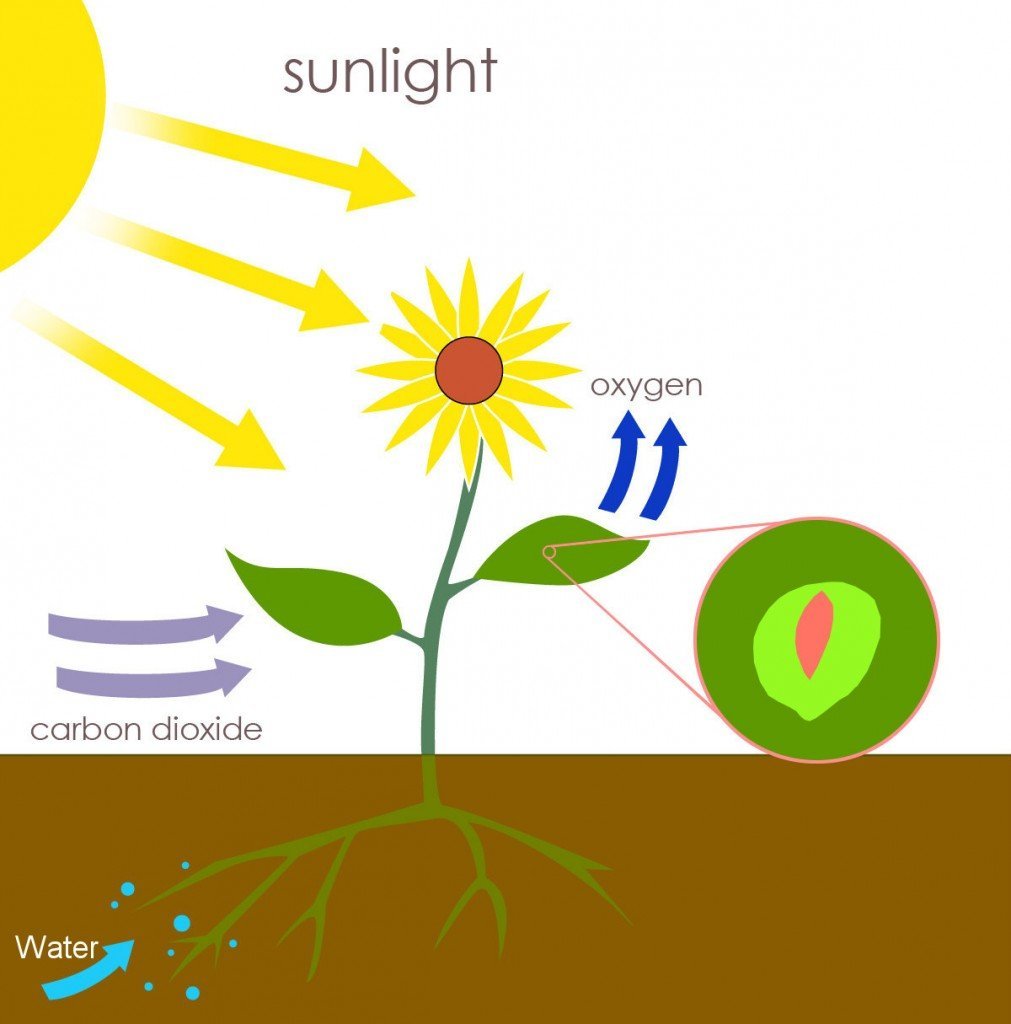
The first part is called a light-dependent or simply, a light reaction, in which light breaks down water to produce oxygen molecules. These molecules are the same oxygen molecules that we breathe. They are exhaled through the stomata and dispersed into the air. The light energy absorbed by a pigment can be either simply dissipated as heat or be converted into another form of energy. We witness the latter in plants. The light reaction converts solar energy into chemical energy; the reaction also produces ATP (Adenosine Tri-Phosphate) and NADP+ (Nicotinamide Adenine Dinucleotide Phosphate), organic compounds that become sources of energy for subsequent metabolic processes.
When light breaks down water at PSII. This releases two protons (H+) and oxygen, and two energized electrons which the chlorophyll-a in PSII accepts. These electrons are passed from PSII to other middle protein structures, like cytochrome bf, to PSI. There these two electrons get energized at PSI due to light energy captured by the photosystem’s chlorophyll-a. These electrons are them funneled to making NADPH from NADP+.
While passing these energized electrons, protons (H+) were taken from outside the thylakoid to its inside. This creates a gradient of H+, more inside than outside. This electrochemical gradient fuels the production of ATP. This happens because of a protein machine called ATP synthase. H+ from inside can return to the outside only by passing through ATP synthase. When H+ pass through ATP synthase, it converts ADP to ATP. This is how light and water create energy for the cell.
One of these processes is the next part of the reaction itself. The two sources of energy fuel the light-independent or dark reaction. The energy breaks down the carbon dioxide molecules and reorganizes the constituents to form a molecule of glucose. The chloroplast then harvests energy by breaking down that glucose, just how mitochondria in animal cells produce energy by breaking down the food they consume. Photosynthesis as a combination of the two reactions can be summarized with this expression:
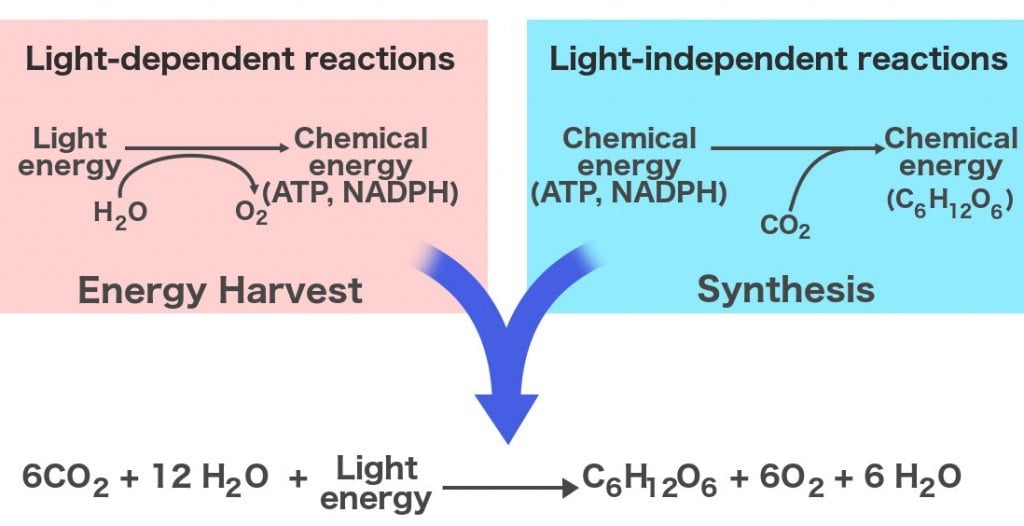
But if plants can produce ATP through photosynthesis, then why do they need to respire? First, photosynthesis can only happen in the daytime, when there is sun around to provide light. Plants still need energy when there is no light. Second, glucose is important molecule for the cell. It can be broken down or built up to make many other biomolecules like DNA, RNA, proteins, and even fats.
In this manner, we share a deep and indispensable symbiotic relationship with plants. The byproduct, or put more impolitely, the waste product exhaled by plants gives us life, whereas carbon dioxide, the waste product that we exhale, gives plants their life. American biologist and one of my favorite science communicators, Lynn Margulis, called this innocuous act of breathing, spirituality.
However, she believes that “the connection doesn’t stop at the exchange of gases in the atmosphere… The fact that we are connected through space and time shows that life is a unitary phenomenon, no matter how we express the fact.”



